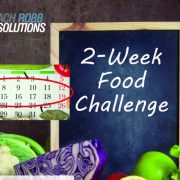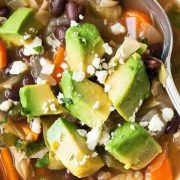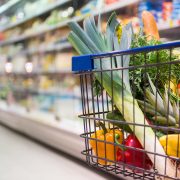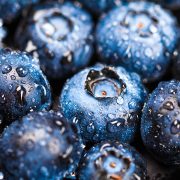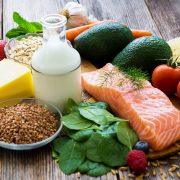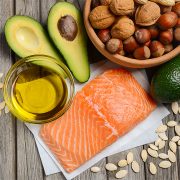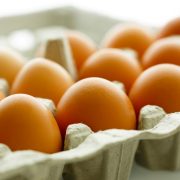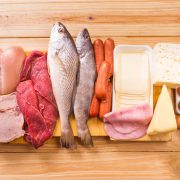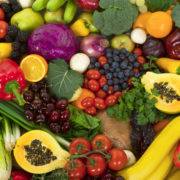In previous articles we have taken a look at how important protein as it relates to health and ultimately performance. In this article we will continue to outline and discuss the various protein sources as outlined by well known nutritionalists Dr’s Maffetone & Michael Colgan. By choosing a variety of protein sources from the healthiest possible: eggs, beef, poultry, fish and other meats, as well as cultured dairy products, and soy in whey, you will obtain a wide variety of other nutrients from these foods. Four instance, eggs contain the important nutrient choline; beef contains L glutamine; Wade contains bio files; and soy contains I.c.e. flavonoids. Additionally, these foods also contain a variety of vitamins and minerals.
Beef – Nutritional Powerhouse
Look at the nutritional facts of a 3 ounce lean porterhouse:
- At least 70% water, contains 20 g of protein
- 6 g of saturated fat and balanced by 7 g of monounsaturated fat
- Rich in B vitamins, glutamine, calcium, magnesium, iron, zinc and other nutrients that are lacking in many diets
Organic and natural beef have not been treated with antibiotics growth hormones or fed any type of animal source protein common in most other animals.
With the threat of mad cow disease, it is especially important to buy beef that has not been given feeds that contain animal by-products. Organically raised beef cattle are fed only certified organic feed and graze on organically certified land.
When cooking beef keep it on the rare side. Studies show that beef cooked medium, medium well or well is associated with higher rates of stomach cancer. This is due to the production of carcinogens from naturally occurring creatinine during cooking. Heat sensitive nutrients such as the amino acids glutamine are also significantly reduced in the cook beyond rare.
Chicken
Recently the poultry industry decided to stop adding antibiotics for poultry feed. This action was based on evidence that bacteria in chicken and turkey were becoming resistance to the drugs. The result is that when humans become infected with bacteria, antibiotics prescribed to them mat be ineffective. This actually follows a measure in the 1950s banning the use of growth hormone and poultry.
While these actions are certainly steps in the right direction, there are still some concerns when it comes to eating chicken or turkey. The poultry industry has done a good job telling you on paper how healthy chicken is over other meats, but few people really look at the way chickens are raised. Typically more than any other animals, chickens are raised in very unhealthy environments. The chicken houses are really a city containing hundred thousand birds or more, cooped up in tiny boxes and very crowded conditions.
Most turkeys, like chicken, are raised in unhealthy environments of poultry factories and are managed for quick growth rather than healthy table fare. In addition, some birds are injected after slaughter with unhealthy substances for flavor and color it to tenderize the meat.
All this does not mean that chicken and other poultry is not a good source of protein – you just need to find a good source. The best for the table is organic raised. This means that the animal has not been treated with or fed any chemicals or drugs, and has only been fed certified organic feed. This is the safest of all poultry. If you can’t find organic poultry, free range bird that have not been treated with pesticides, and which have been fed a diet that does not include animal byproducts such as chicken parts are your best option.
Fish – The Power of Omega 3
Many people turned his fish as a healthy protein source. Fish are a good source of protein and some also contain significant amounts of essential fatty acids especially omega-3 fats. However just as with other protein foods, some fish are healthier choices than others. For instance if you’re eating farm raised salmon or other fish, your catch of the day may include antibiotic’s, pesticides, steroids, hormones and artificial pigments. Additionally, pollution of waterways and oceans has increased the potential danger to eating all fish and seafood.
As outlined by Dr. Maffetone, farm raised salmon, which make up 95% of the salmon on the market, and the bulk of fish purchased by consumers, are raised in aquatic pens – the undersea equivalent to cattle feedlots and chicken factories. Since these fish are raised in confined crowded and unsanitary conditions, the threat of disease and parasites is great. To combat disease and parasites, some fish farms add antibiotics to salmon feed and treat the salmon and their pens with pesticides. Some salmon are also treated with steroids to make the fish sterile and growth hormone to speed them to market size and reduce production costs. In addition, since farm raised salmon do not naturally eat crustaceans, which makes the flesh pink or orange, salmon growers often feed color additives to pigment the flesh.
As clearly outlined by Dr. Maffetone, if you choose to eat fish, it is best to buy wild caught fish. However this is not perfectly safe either. One study found that more than 74% of wild fish caught near fish farms contained antibiotics from eating feed that drifted out of the fish farm pens. In addition to feeds from the fish farms, there are other concerns to eating wild fish. Contamination is possible due to infection from bacteria or viruses, heavy metals such as mercury, food additives such as sulfites and histamines, pesticides such as DDT and other chemicals such as polychlorinated biphenyls (PCB’s).
As a general rule, avoid consuming seafood that includes the so-called bottom feeders, these fish and others see that eat from the ocean’s floor, are extremely dangerous because of the potential of consuming toxic material is at its highest concentration levels. This is especially true for those species that feed close to shore. Flounder, sole, catfish and crabs are some examples of foods to avoid eating regularly. Oysters, clams, mussels and scallops are also sources of potential pollutants.
Clams are perhaps the worst seafood to eat, especially when raw, since they normally filter out and concentrate viruses and bacteria, heavy metals and other chemical pollutants from the waters in which they live.
If you enjoy eating seafood, here are some tips for doing so more safely and more nutritiously:
- Choose fish and crustaceans caught far away from polluted industrial areas. Some examples are northern Maine lobster, Canadian salmon, sardines and herring.
- Look for cold water fish like salmon, tuna, sardines and others which contain higher amounts of omega-3 fat and EPA.
- Eat smaller fish and crustaceans; Trout, bass and shrimp rather than Marlon and swordfish. Smaller and younger fish have not accumulated the toxins found in larger and older species.
- Avoid pre-cooked fish, and prepared or processed seafood such as breaded fish or seafood, fish cakes, ground fish and imitation crab meat.
- If you catch your own fish, ask local authorities about the limits of safety. Some regions recommend limiting how much of certain species you should eat any year.
Other Meats
In addition to beef, poultry and fish, other meats are also good sources of protein according to Dr. Maffetone. Pork and lamb are popular meats and recently more exotic meat such as buffalo have appeared in some grocery stores and fresh markets. When choosing these meats, use the same guidelines as with beef and poultry – buy those that are raised naturally, or better yet, organically. A good deal of pork on the market is raising large-scale hog operations just like chickens, so it is advisable to look for better sources of meat.
Wild Game
Including big-game animals such as deer as well as small game such as rabbits and game birds, is also another great source of protein. Wild game meat is generally leaner but higher in essential fatty acids than domestic meats. While hunting your own meat is nearly ideal, there’s a growing concern in some areas like the northeastern United States that the use of pesticides and other environmental chemicals have affected wild animals. But in general, wild game is much safer than store bought meat.
Ground Meat (of any kind)
One of the worst types of meat to consume is ground meat of any kind. Avoid all ground beef, poultry, pork or other meats, unless it has been freshly ground right before you freeze or consume immediately.
Ground meat is a haven for bacteria in can ferment in your intestine much worse than whole meat. If you like ground meat, or have a recipe that requires it, it is better to buy a large piece of meat and have it ground up just before cooking – most butchers, even those in large grocery stores, will do this for you. Also, beware of other meats that have been cut, such as sliced meat, chopped meat and stew meat. Try to buy as large a piece of meat as possible and cut it yourself.
Please Pass the Cheese for Nutritional Power
Cheese, cottage cheese and plain yogurt are dairy products that contain quality protein without many of the problems associated with milk. This is especially true if you can find products made from goat or sheep milk rather than cow milk. Goat and sheep milk are much more compatible for humans than cow milk.
As described by Dr. Maffetone, whichever type of milk they’re made from; culture products such as these are good sources of protein because the lactose, or milk sugar, has been consumed by bacteria in the culturing process. These bacteria literally gobble up the sugar. To be sure that an item is fully cultured, check the nutritional facts on the label; the carbohydrate should be very low. This is also true of yogurt – many popular brands are not fully cultured. Of course you want to avoid the fruit flavored varieties which are always full of sugar, with some containing more than ice cream.
If you use cheese, whole milk cottage cheese or yogurt as protein sources, it’s important to remember that these are also high in B fat. Avoid American cheese, cheese spreads and other processed cheeses. These highly processed products, which outsell natural cheese, are usually several types of unripe cheeses, ground up with added chemical stabilizers, preservatives and emulsifiers. Sheep, goat cheese and yogurt can be found in many supermarkets, health food stores and are also available on the Internet.
Whey Protein
Two proteins found in milk: curds and whey. Whey protein is the thin liquid part of milk remaining after the casein (the curds) and fat are removed. Whey is the part of the milk containing most of the vitamins and minerals, including calcium. Whey is a complete protein. It’s nutritional and therapeutic values are well documented, and this food is often referred to as nutraceutical.
Biothiols are a group of natural sulfur containing substances that promote basic antioxidant activity in your cells, and are contained in high amounts in whey. In providing this vital raw material, whey is a key food for the immune system – one that can help prevent and treat many chronic conditions, from asthma and allergies to cancer and heart disease. It can also help improve muscle function.
The body uses the biothiols in whey as a raw material to produce a substance called glutathione. This substance is at the heart of regulating the bodies antioxidant defense mechanism, and is even more important than vitamin C and E, and others in that group of popular antioxidants.
Those who are allergic to cow’s milk can usually consume whey without problems. Small amounts of lactose are found in whey (much less than is found in liquid milk), but this is usually too little to cause intestinal problems, even in most people sensitive to lactose. In those who are truly lactose intolerant (less than 5% of the population), this amount of lactose could be a problem.
Whey protein is contained in high amounts in certain cheeses, such as a Italian ricotta (check the ingredient label on ricotta to make sure the main ingredient is whey). Avoid highly processed whey products such as those, which contain whey-protein isolate and caseinate.
Myths and facts About Soy
According to Dr. Maffetone, soy is one vegetarian source of a complete protein. Whole green soybeans or edamame are excellent sources of protein and also fiber. Soy products such as tofu also contain quality protein.
When buying products that contain soy it is important to avoid those which have been highly processed. These include soy protein isolate and caseinates and hydrolyzed soy, which often contain monosoodium glutamate (MSG) as a byproduct of processing. This MSG byproduct is not listed in the ingredients.
Soy is acceptable as a food and food ingredient only if it reflects real soybean quantity and quality rather than a highly processed product. Examples of real soy foods include soy beans, tofu and soy concentrates with the same amino acid profile as whole soybeans.
Many people think soy is a wonder food. But like all foods, some people will benefit from soy while others may not. In fact, just as many people maybe intolerant to soy as dairy. In addition, soy products fortified with concentrated isoflavones can pose serious dangers, including an increased risk of cancer, particularly for postmenopausal women, the very audiences products are marketed to by the big companies. This may also contribute to hormone imbalance.


